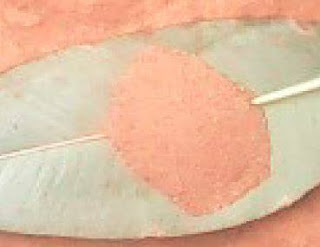Before getting into encryption and ciphers, let's examine how humans communicate...
According to science, Homo sapiens (Humans) started communicating verbally after they acquired the use of language about 100,000 years ago. With language, any message irrespective of its complexity can be transmited between people over a limited range - in a room, hall or across a short open space.
Conveying messages over a long distance was a great challenge for our ancestors (writing had not been invented and no mobile phones or internet then!). People relied on other people (messengers) to relay messages. But what if you want to send a secret message to a friend or colleague residing in another village or town some kilometres away? What if you want to send a message to your lover through his/her spouse?
Different cultures devised their unique methods of sending coded (encrypted) messages. For the Yoruba of old however, they used symbols in the form Àrokò (Semiotics) - precursor of hieroglyphs for one to one communication and Drums sound for general broadcast - See previous post: "Data/Information Encryption - A cue from Ilu Ganga (Yoruba Talking Drum").
In this post, the focus will be on Àrokò. The Àrokò system is symbolic and uses both animate and inanimate objects packed together to communicate.
Three actors are simultaneously at play in this system - the sender, the Àrokò and the receipient. The receipient should be able to interpret the coded message represented by the Àrokò and for this, a prior understanding of what the Àrokò symbolises between the sender and the recipient is agreed.
Generally, the Àrokò is sent through a massenger (e.g. animal - dog or a child or an adult).
Common objects used in Àrokò are: cowrie shells, stones, kolanut, calabash, gun, blood, leaves, broom, chewing stick, parrot feather, cloth etc.
Examples of Àrokò (see graphics)....
Two cowry shells tied together with black thread: Àrokò for imminent doom.
Some ‘Ọ̀dàn’ leaves placed in front of a house: Àrokò for warning against pride.
Deposited plucked feathers of fowl at the backyard of a house: Àrokò for warning against a philandering man.
Firebrand at the back of a house: Àrokò for warning against philandering man that his house will be burnt down if he does not desist.
Four cowry shells strung together back to back: Àrokò for signalling a break in trust/friendship.
Three cowry shells in a leaf: Àrokò for demanding prompt payment of debt.
Three cowry shells: Àrokò for signalling the refusal of proposal or request
A torn piece of palm frond: Àrokò for breaking family bond or kingship relationship.
A local traditional comb: Àrokò for breaking lovers relationship.
Three Agbaarin fruits: Àrokò for signalling imminent fight or quarrel.
A parrot egg in a calabash: Àrokò for telling a tyrannical King or Chief to commit suicide.
A handful of sand in a leaf: Àrokò for the recipient to go on exile for a grave offence.
A cutlass with a fresh palm front tied to it: Àrokò for notification of a looming war against the recipient community.
References:
Graphics from "Symbols of Warning, Conflict, Punishment and War and their meanings" by Ojo, Matthias Olufemi Dada
Graphics from "Symbols of Warning, Conflict, Punishment and War and their meanings" by Ojo, Matthias Olufemi Dada













No comments:
Post a Comment